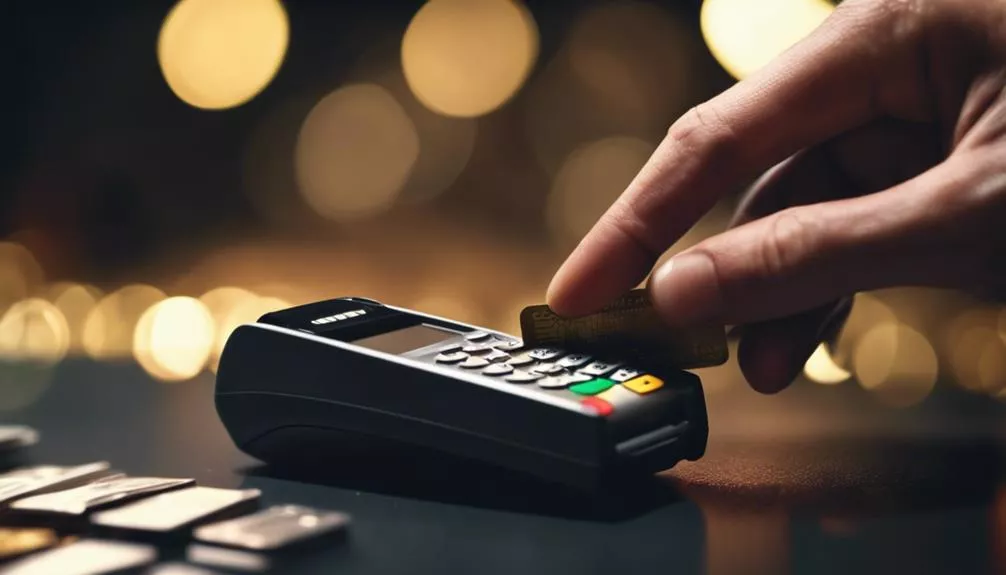Exploring Chip Card Technology and Consumer Behavior
The shift to chip card technology in the United States has become a fascinating case study in understanding how consumers navigate technological changes. While the security benefits are clear, challenges related to user experience and communication clarity have left many feeling confused. This raises important questions about how stakeholders can effectively engage with consumers during such transitions, shedding light on lessons learned and broader implications for future technological implementations.
User Experience Challenges
The introduction of chip card technology in the U.S. since October 2015 has presented significant user experience challenges, hindering widespread acceptance among consumers. Many users have faced consumer confusion due to the unfamiliar process compared to traditional methods, leading to feelings of frustration similar to the outdated experience of writing a check.
Research suggests that fear of lacking necessary skills contributes to these challenges, evoking emotional responses like feelings of unintelligence or being out of touch. To address these obstacles, it’s crucial to acknowledge consumer concerns and facilitate a smoother adaptation process to empower users and boost confidence in utilizing this new technology effectively.
Benefits Vs. Discomfort of Change
While chip cards offer enhanced security benefits, many consumers remain unaware of these advantages, overshadowed by the discomfort of the transition process. This discomfort often manifests as frustration with longer processing times, leading to a reluctance to embrace change.
To foster a positive change mindset, it’s essential to enhance awareness of the benefits of chip technology, such as reduced fraud risk and enhanced data protection. By consistently communicating these advantages, consumers may shift their focus from temporary inconveniences to long-term benefits, mitigating negative perceptions and encouraging a more supportive attitude toward technological advancements.
Communication and Clarity Issues
Effective communication is crucial during the transition to chip card technology to avoid misunderstandings that can hinder user acceptance and satisfaction. Notification clarity plays a vital role in this process, as users may misinterpret transaction indicators, leading to feelings of embarrassment if they believe their card has been declined.
To minimize confusion, retailers should focus on user-centered design, ensuring intuitive and well-explained features. Educating customers about the purpose and functionality of these notifications can foster clearer understanding and smoother transitions.
Role of Employee Engagement
Miscommunication can derail user experience during significant technological changes, underscoring the importance of employee engagement. Retail workers play a crucial role in guiding customers through new processes, influencing the success of transitions like the chip card rollout. Employee advocacy, supported by structured technology training programs, can alleviate user concerns and enhance satisfaction.
| Aspect | Importance |
|---|---|
| Employee Advocacy | Promotes trust and user confidence |
| Training Programs | Ensures staff are knowledgeable |
| Empowerment | Increases ownership and accountability |
| Communication Skills | Enhances customer interaction |
| Feedback Mechanism | Improves adaptation strategies |
Implementation Readiness Factors
Successful implementation of new technologies like chip card systems relies on evaluating readiness factors. Technology reliability, machine certification, and usability benchmarks are critical to fostering user acceptance and preventing frustrations that may arise from non-functional machines.
Thorough assessment of these readiness factors not only enhances the overall experience but also paves the way for a smoother integration of chip card technology into everyday transactions.
Frequently Asked Questions
How Do Chip Cards Protect Against Fraud Compared to Magnetic Stripes?
Chip cards enhance security benefits by utilizing encrypted data and dynamic authentication during transactions, significantly reducing fraud risks compared to magnetic stripes.
What Should I Do if My Chip Card Is Not Working?
If your chip card is malfunctioning, first check for physical damage and then try using it at a different terminal. Contact your card issuer for troubleshooting tips if issues persist.
Are All Retailers Required to Accept Chip Cards?
Not all retailers are mandated to accept chip cards, but they should provide secure payment options. Consumers have the right to choose establishments prioritizing modern payment technologies.
How Can I Speed up Transactions With Chip Cards?
Leveraging chip card advancements, educating users on proper use, optimizing reader functionality, and ensuring machine readiness can significantly enhance transaction speed.
What Are Some Common Myths About Chip Card Technology?
Common myths include misconceptions about chip card security eliminating fraud entirely. Consumers must remain vigilant against evolving threats despite enhanced protection.
Final Thoughts
The transition to chip card technology in the U.S. offers valuable insights into user experience challenges, underscoring the importance of communication, employee engagement, and implementation readiness. These strategies could redefine future technological adoptions, enhancing consumer trust and satisfaction beyond mere inconvenience.



